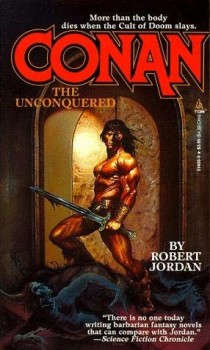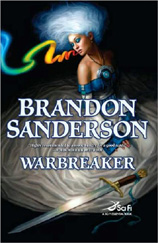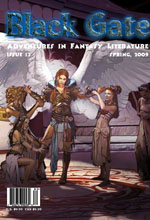Books at Christmas
 Some of my fondest Christmas memories involve getting (and, later, giving) a new crop of books as gifts every year. Unique among my interests, books have bridged the gap from childhood to adulthood — from the era of plastic battlesets and bolt-spitting robots to that of of daily planners, jumper cables, and bottles of Irish Cream. Books have always been there.
Some of my fondest Christmas memories involve getting (and, later, giving) a new crop of books as gifts every year. Unique among my interests, books have bridged the gap from childhood to adulthood — from the era of plastic battlesets and bolt-spitting robots to that of of daily planners, jumper cables, and bottles of Irish Cream. Books have always been there.
In fact, they tend to be the only thing that still recaptures a bit of that childhood glow of excitement of getting a gift, for me at least. The car wax, wide-toed socks, and jumbo pack of batteries are all very nice and thank you — they just don’t spark the imagination. And I think, ultimately, when you’re a kid that’s what all the excitement is about — not the getting per se, but the finding out. As a kid Christmas, for those of us privileged Westerners that celebrate the holiday in all its modern commercial glory, is an undiscovered country. In a society increasingly dominated by instant gratification, it may be one of the few delayed pleasures left to todays’ children.
And books always hold that promise of exploration — even when firmly in our hands they are unknown to us, not yielding up their secrets until we’ve read them. And reading, too, is a form of play, of the kind of stimulation we partake in less and less as responsibility waxes and innocence wanes. I’m seldom surprised by the titles of the books I’m given as gifts — after all I’m usually the one that suggested them in the first place — but that doesn’t matter. It doesn’t matter because a book is a wrapped gift in-and-of-itself, and needs no bow, ribbon, or paper to make it so.
 I hadn’t planned on doing a post today, since foreign travel makes it difficult to keep up a decent post aside from writing, “Hey, I’m in Bavaria with my sister and my nephew, can’t toss you anything today.”
I hadn’t planned on doing a post today, since foreign travel makes it difficult to keep up a decent post aside from writing, “Hey, I’m in Bavaria with my sister and my nephew, can’t toss you anything today.” Here in Central Virginia, we’re having one of those once in a decade or so storms in which you fill up your bathtubs with water and just hope the electricity stays on. So far it has (or otherwise I wouldn’t be able to post this).
Here in Central Virginia, we’re having one of those once in a decade or so storms in which you fill up your bathtubs with water and just hope the electricity stays on. So far it has (or otherwise I wouldn’t be able to post this). Pax Dakota
Pax Dakota Conan the Unconquered
Conan the Unconquered There are a lot of things to commend this book to an experienced gamer. The rules are fairly simple yet cover a lot of ground. I like how the abilities are not really tied into specific stats that are sometimes hard to justify - this system is much more fluid. It also is not conducive to rules lawyering and if there is one thing I hate, it is rules-lawyering, so this is a positive for me. I can see where the OCD crowd who wants a rule for everything could be irritated with it, but I game by the principle that story precedes rules, and this rule set is made for that mindset.
There are a lot of things to commend this book to an experienced gamer. The rules are fairly simple yet cover a lot of ground. I like how the abilities are not really tied into specific stats that are sometimes hard to justify - this system is much more fluid. It also is not conducive to rules lawyering and if there is one thing I hate, it is rules-lawyering, so this is a positive for me. I can see where the OCD crowd who wants a rule for everything could be irritated with it, but I game by the principle that story precedes rules, and this rule set is made for that mindset. Anyone familiar with the Mistborn series knows Sanderson is expert at spinning fantasy stories packed with memorable characters, crisply detailed settings, unique magic, and major helpings of intrigue. Lately he’s been feted as the writer continuing Robert Jordan’s Wheel of Time series. While I realize that from a purely professional standpoint, the deal was a no-brainer, I hope cleaning up the WoT‘s loose ends won’t keep this talented author from giving us more of his own marvelous work.
Anyone familiar with the Mistborn series knows Sanderson is expert at spinning fantasy stories packed with memorable characters, crisply detailed settings, unique magic, and major helpings of intrigue. Lately he’s been feted as the writer continuing Robert Jordan’s Wheel of Time series. While I realize that from a purely professional standpoint, the deal was a no-brainer, I hope cleaning up the WoT‘s loose ends won’t keep this talented author from giving us more of his own marvelous work. Talebones, a so-called semi-prozine published twice a year, is calling it quits with issue #39 , some 14 years from its debut in 1995. Details as to why editor/owner Patrick Swenson is ending publication are scant, other than this terse
Talebones, a so-called semi-prozine published twice a year, is calling it quits with issue #39 , some 14 years from its debut in 1995. Details as to why editor/owner Patrick Swenson is ending publication are scant, other than this terse  Long-time reader and professional writer Brent Knowles recently posted a review of Black Gate 13:
Long-time reader and professional writer Brent Knowles recently posted a review of Black Gate 13: Creepy experience number one happened in New Orleans in
Creepy experience number one happened in New Orleans in